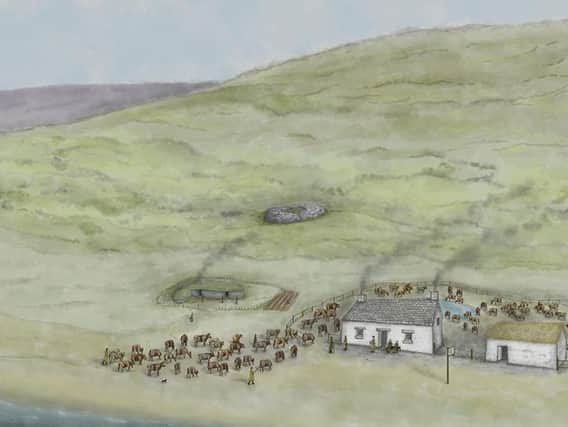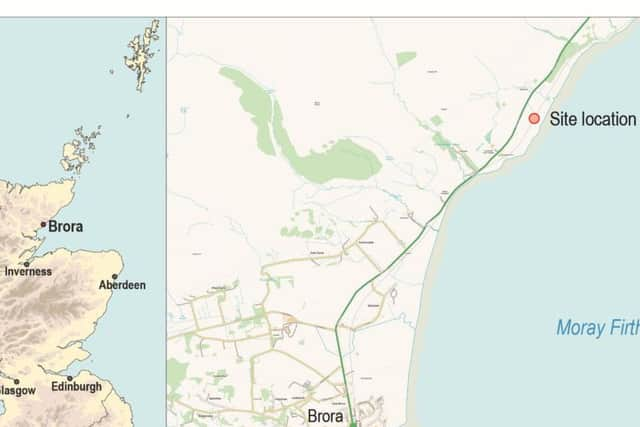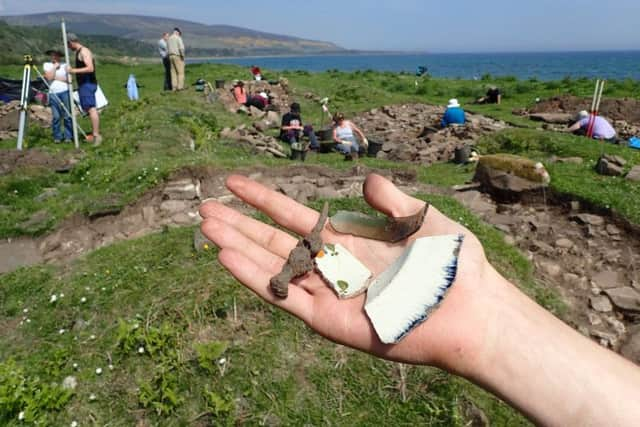The bustling Highland pub wiped out by the Clearances


Sometimes, as the nights got long and busy with locals and travellers, shots would sometimes be taken with glasses broken in the raucous toasts enjoyed at the 18th Century Highland inn.
But, as the community that held the Wilkhouse Inn, near Brora, at its heart vanished during the Highland Clearances, the pub that once brought the people together in this part of Sutherland also faded from the landscape.


Advertisement
Hide AdAdvertisement
Hide AdArchaeologists have been working at the site of the pub to piece together this history of the building that also became a vital stop off for those working and travelling on the nearby drove roads.
The pub served residents and travellers from the mid 1700s but by 1819 the surrounding land was cleared of its people with the old tenant way of life replaced by new sheep farms that were let out to the highest bidder.
By 1870, once the tenants had gone and the railway arrived, the once-popular well-built tavern was just a ruin marked on a map.


Archaeologist Warren Bailie, who directed the excavation at Wilkhouse, said: "The evidence reveals a place pivotal to the local economy, where the continuity of settlement within the Highlands was in the process of developing into modernity before being cut short by the clearances instigated by the Sutherland Estate."
Collections of coins found at the site show the drove road that passed the pub was used till at least as far back as the late 16th Century.
Earlier antiquarian finds nearby indicate occupation in the Norse, Pictish and Iron Age periods.
When the pub was built, it was a "statement of modernity and affluence" with materials such as harled stones, lime mortar bonding, double chimneys and a slate roof .
At that time, drovers' inns were usually a drystone longhouse with wooden shuttered windows, low walls, central hearths and a thatched roof.
Advertisement
Hide AdAdvertisement
Hide AdAs the Clearances took hold in Sutherland - where 118,000 sheep were brought onto the land between 1808 and 1820 - the roadway was moved from outside the pub to up a nearby hill and out of site.
New pubs in Brora and Helmsdale, which was created on the coast to house some of the Sutherland Estate tenants, also impacted business at the Wilkhouse.
Mr Bailie added: "The inn was not be spared and by the coming of the railway in 1870 had sank into obscurity and was little more than a ruin."
Dr Donald Adamson, whose research on Highland drove roads led to the archaeological excavation, said accounts from 1802 written by local minister Rev Donald Sage "gives a picture of what was lost when the inn was forcibly closed in the name of improvement".
He described the landlord Robert Gordon and his "bustling, talkative wife" and the pub floor, which was covered in half an inch of sand
"We dined heartily on cold meat, eggs, new cheese, and milk.
"Tam, our attendant, was not forgotten; his pedestrian exercise had given him a keen appetite and it was abundantly satisfied,” the minister wrote.
Work by archaeologists at the site revealed the full extent of the fare taken at Wilkhouse with remains of rabbit, birds - including auks - fish and whelks on the menu.
Advertisement
Hide AdAdvertisement
Hide AdThe also found a curious inverted cross carved into one of the hearth stones and may have been intended to deter witches flying down the chimney.
Recovered shards of ‘firing’ or ‘shot’ glass indicated the toasts that were exchanged after a meal or drinking session.
Coins drawn from the site were mostly halfpennies minted during the reign of George II and George II.
Four earlier coins suggest the pub site was occupied during the 17th Century and before, including a billon hardhead - a two pence Scots - dated to 1588 during the reign of James VI.
Personal items including pins, buckles, strap fittings, thimbles and a part of a comb were also found.
The excavation involved collaboration between Dr Adamson, Clyne Heritage Society, the University of Glasgow and GUARD Archaeology.